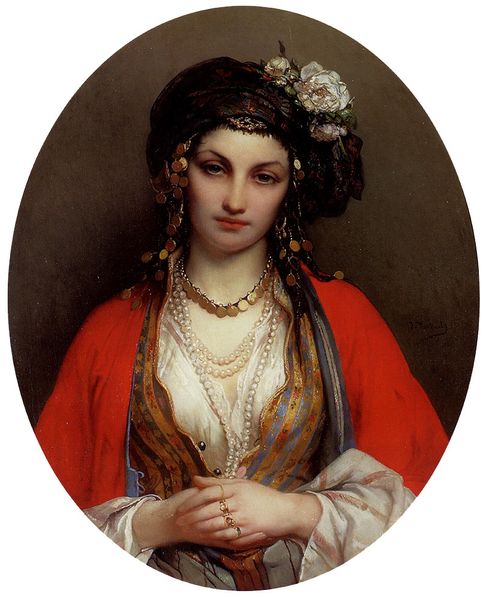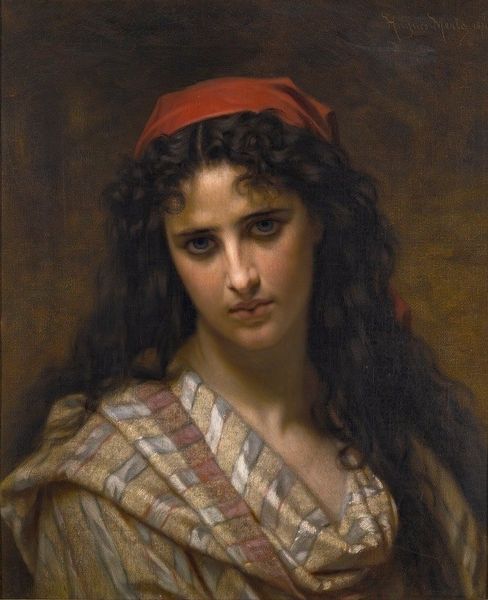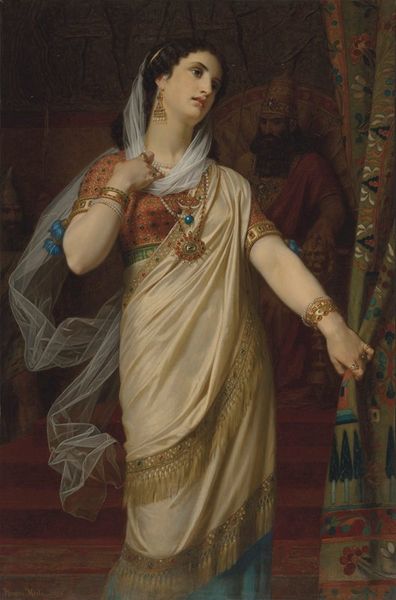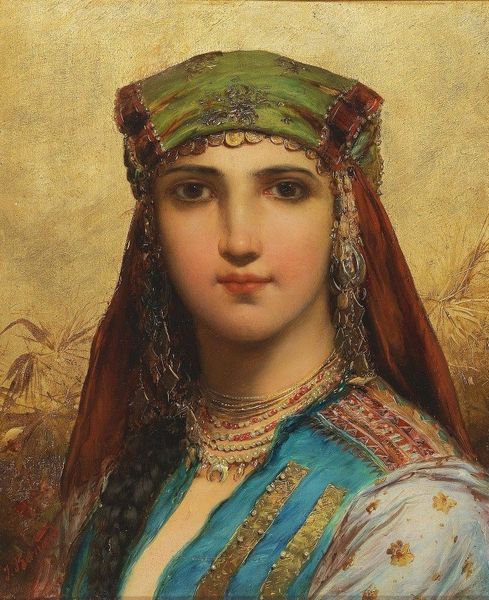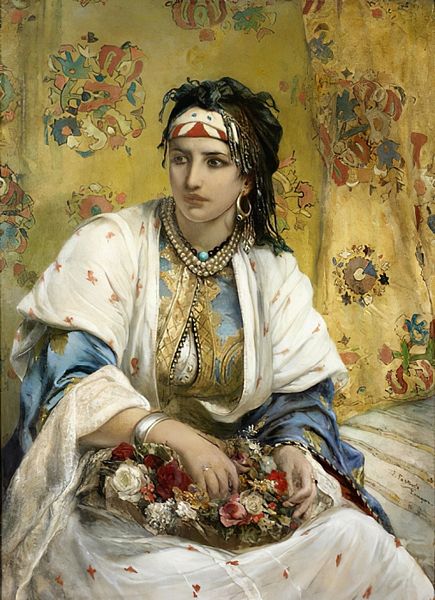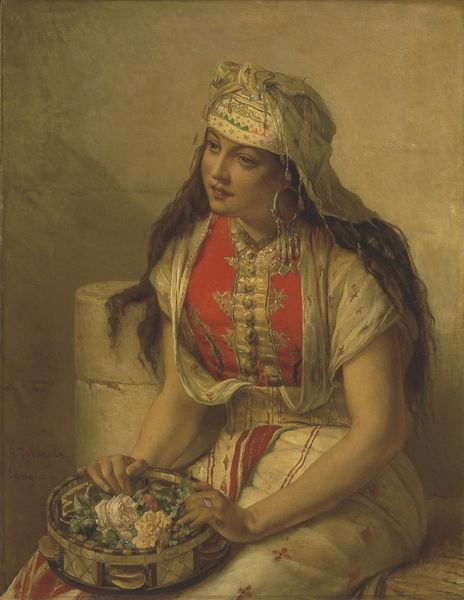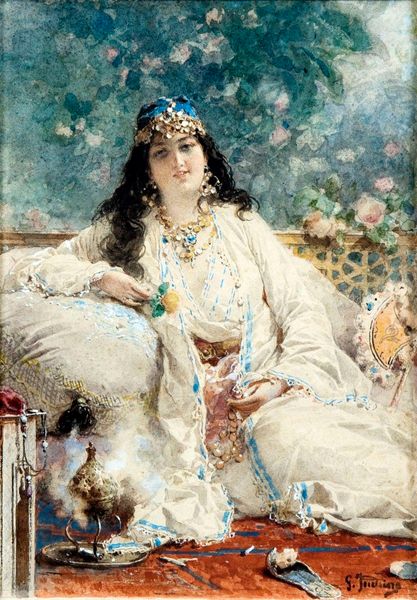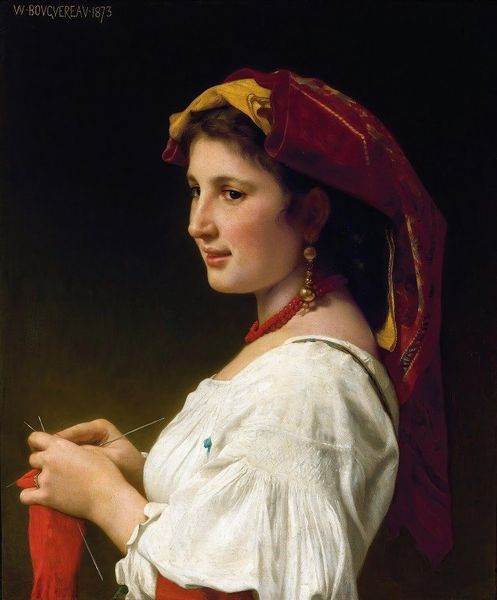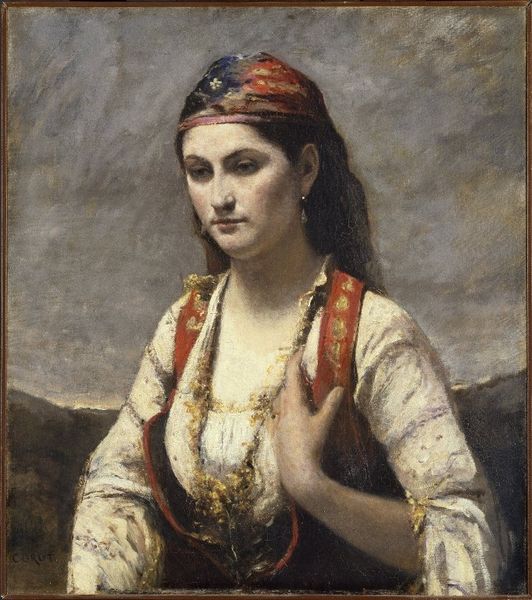
Copyright: Public Domain: Artvee
Editor: We’re looking at "A Turkish Beauty," an 1868 oil painting by Hugues Merle. There's something so romantic and maybe even a little staged about her gaze... like she's playing a part. What’s your take? Curator: Oh, staged for sure! But wonderfully so, wouldn’t you agree? Merle, with his smooth brushstrokes, invites us into this constructed exoticism so popular in the 19th century. Think about the "Orientalist" movement; it wasn't necessarily about capturing reality, was it? But, more of a projection of European fantasies and desires onto the "Orient." What do you think her story might be? Editor: Well, I guess I thought maybe she's just posing for the painter in his studio in Paris! I hadn't thought about that larger cultural fascination you mention. Does she seem... realistic to you, though? Curator: "Realistic" is a loaded word when we're dealing with constructed realities, isn't it? Note her perfectly arranged hair, the lavish fabrics, even her demure smile feels deliberately composed. It all caters to a very specific viewer, feeding their preconceptions and dreams. Do you feel drawn in by that artificiality or distanced by it? Editor: Maybe both? There's a beauty there, no denying it, even if it's a constructed one. And I didn't really know anything about "Orientalism" until now! It kind of changes how I see these paintings now. Curator: Exactly! And that tension, that push and pull between the appealing and the problematic, is precisely where the fascination, and indeed, the challenge of these artworks resides, I believe. Art offers that insight; seeing it through many lenses, yes?
Comments
No comments
Be the first to comment and join the conversation on the ultimate creative platform.


